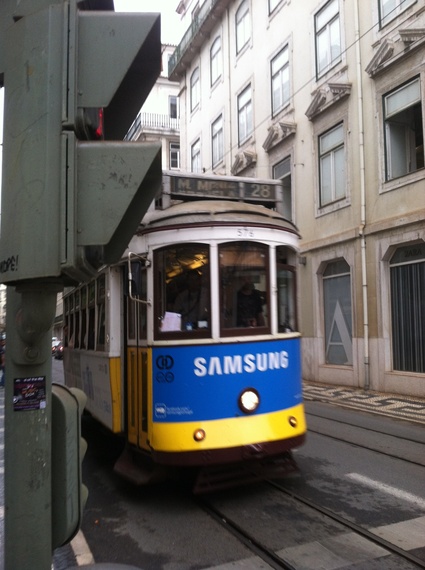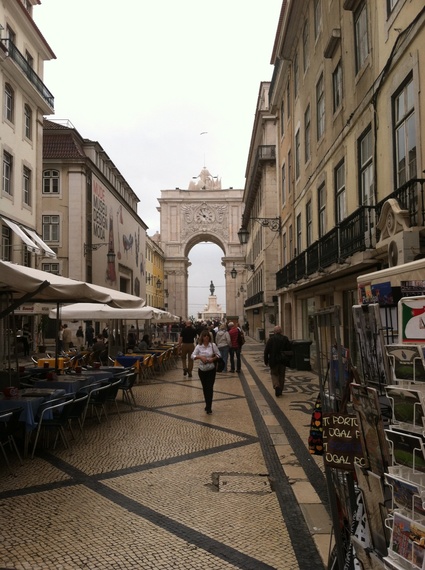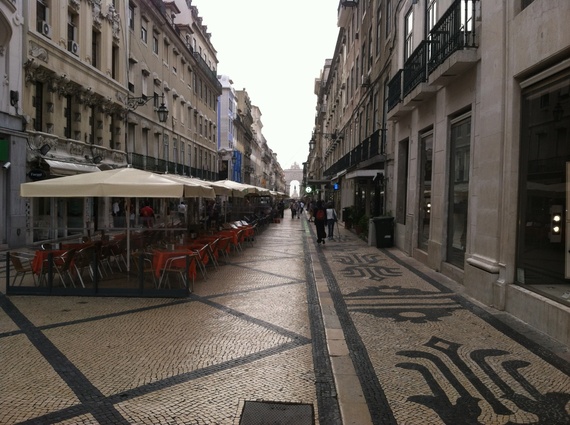We wanted a unique travel experience, not just another "typical" tourist destination... and we found a very special place in Lisbon. Rooted in the past with time-weathered buildings and cobblestone streets, Lisbon is rich in charm and history. Lisbon faces the ocean, unusual for European cities, and is called "the City of the Seven Hills." Lisbon is certainly fun to explore varied neighborhoods, recently experiencing a renaissance. Alfama, the oldest neighborhood, traces back to the Moors, now reached by the famous Tram, #28. More than the single stop, we hopped on and off that roundabout trolley touring our way through Lisbon. Part of another historic hill district, Bairro Alto, now hosts a hip nightlife, with offerings from many local eateries and drinking establishments. And then there is Belem, graced with grand architecture, so grand that Belem Tower, built in 1515, reigns as a most famous, well-visited landmark... does the U.S. have anything of such ageless beauty to compare? In the end, we chose to spend most of our time in the "lower town," otherwise known as Baixa -- historically, as well as presently -- the heart of Lisbon.
Baixa is bound together with a series of squares and was rebuilt in 1755 after a disastrous earthquake. Interestingly, Baixa can be considered Europe's first example of urban planning. Designed in a large, rectangular shape, the district is replete with neoclassical buildings throughout. Streets are named after traditional crafts and businesses -- Rua da Prata (Silversmiths' Street) and Rua dos Sapateiros (Cobblers' Street), among others. Originally, the area was government and commercial and, today, consists mostly of galleries, restaurants, tourist fare and work-a-day city commerce. Baixa's most important square, the Rossio, houses one of the most eccentric structures on its western end. The Elevador de Santa Justa was built in 1902 as an almost-copy of the Eiffel Tower. We rose in a giant elevator up through the latticework metal tower to appreciate beautiful panoramic views of Alfama and Bairro Alto.
New Yorkers are fond of the saying, "What is morning without a good cup of coffee?" Lisbon is mecca for coffee drinkers. Every café serves pastry -- croissants and rolls as well as the most popular Portuguese custard tart. Coffee is strong bica (espresso) or milky galao (latte) and universally delicious. In Rossio, we visited Café Nicola. Tied to the past by its 1929 art deco façade, Café Nicola remains now, as then, Lisbon's literary and political meeting point. An even older café, Pastelaria Suica, invited us to sit outside on the terrace and indulge in the festive atmosphere and people-watching.
The grandest building in Rossio Square is Teatro Nacional Dona Maria II. What an interesting history... strange, really, and similarly as strange as other historical buildings in Lisbon. Teatro was built on the ruins of Palacio dos Estaus, burned down after housing the court of the Holy Inquisition. Today, Teatro, is more than just a concert hall, and includes a theater, studios and is a proud home for community activities.
Continuing on through Rossio we emerged onto Restauradores. This large square commemorates Portugal's liberation in 1640 from 60 years of Spanish rule. Don't miss the Foz Palace, standing on the west side of the square. Originally built as an estate of the Marquis of Foz, the building interiors and furnishings were inspired by Versailles. Just check ahead, as special permission is needed to visit. Next door to the Foz is another art deco gem, the Eden Cinema. The German filmmaker Wim Wenders used the cinema's lavish interiors in his movie Until the End of the World. Not a movie buff? The 1929 interiors can still be viewed today; the Eden is now a hotel.
The Rossio and Restauradores Squares, in particular, are surrounded by interesting places to stay. If modern Lisbon is your choice, then Internacional Design overlooking Rossio is perfect. Only four-years-old, The Design is fun and funky. Every floor has a different theme -- this is not your usual hotel. If you want to embrace historic Lisbon, enjoy the Heritage Avenida Liberdade. Remodeled from an 18th century townhouse, the interiors are complemented with hand-painted tiles and antique furnishings. Laid-back and graceful, the hotel has a particularly lovely touch -- tea, shortbread and port wine are offered daily to visitors.
Lisbon is often overlooked for its ever-popular European cousins, but is a quirky, unique find. We found the bleached-out limestone buildings, old world mystique and most appealing laid-back charm, a wonderful addition to our list of never ending quests to experience the world
Lisbon, Portugal -- Baixa, Heart of the City
We wanted a unique travel experience, not just another "typical" tourist destination... and we found a very special place in Lisbon.
This post was published on the now-closed HuffPost Contributor platform. Contributors control their own work and posted freely to our site. If you need to flag this entry as abusive, send us an email.




